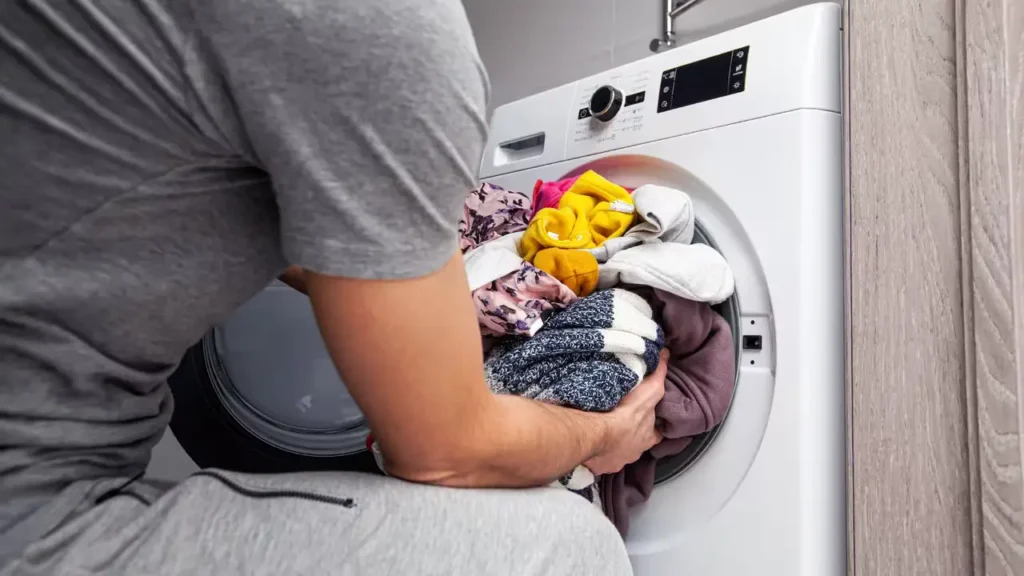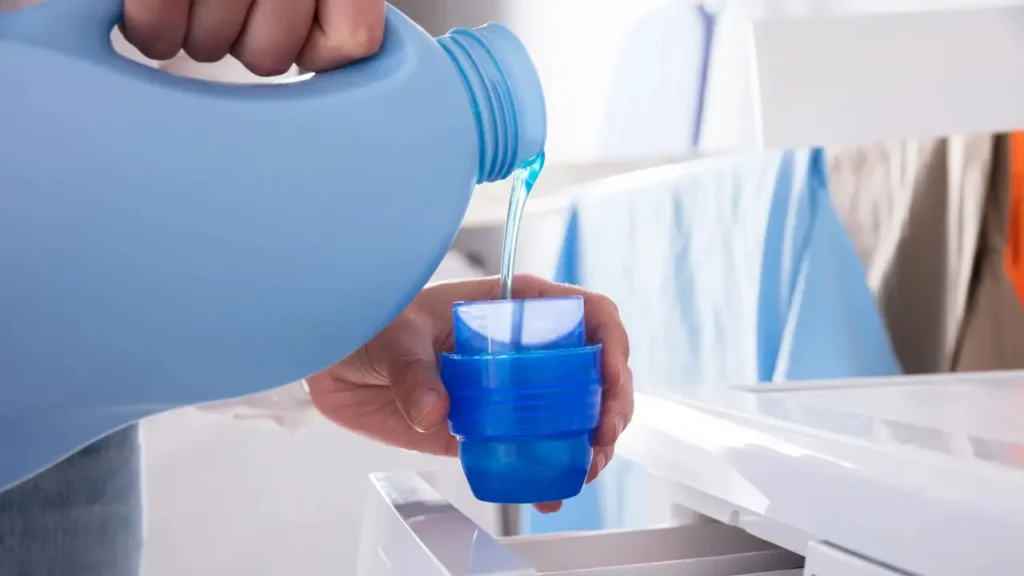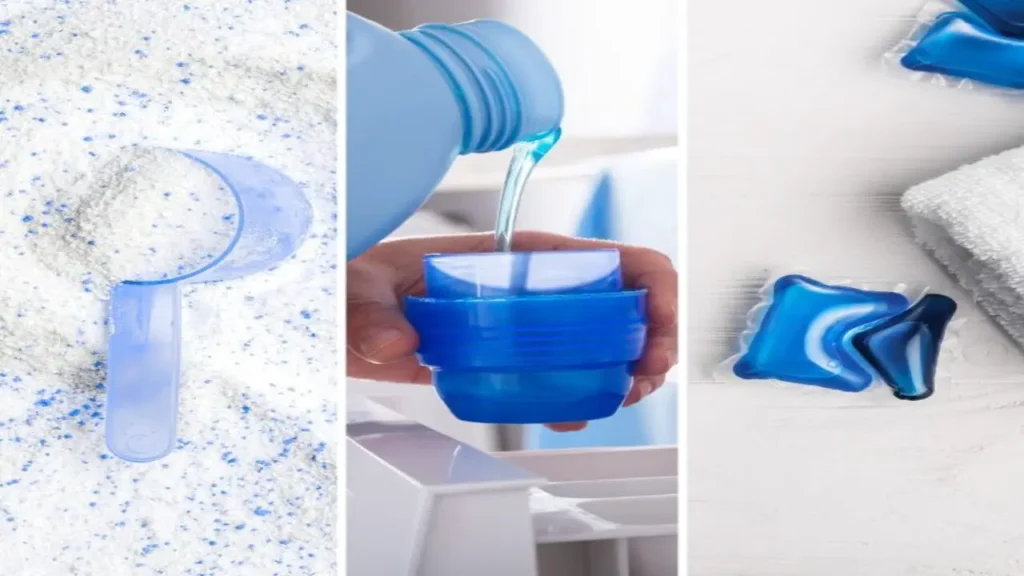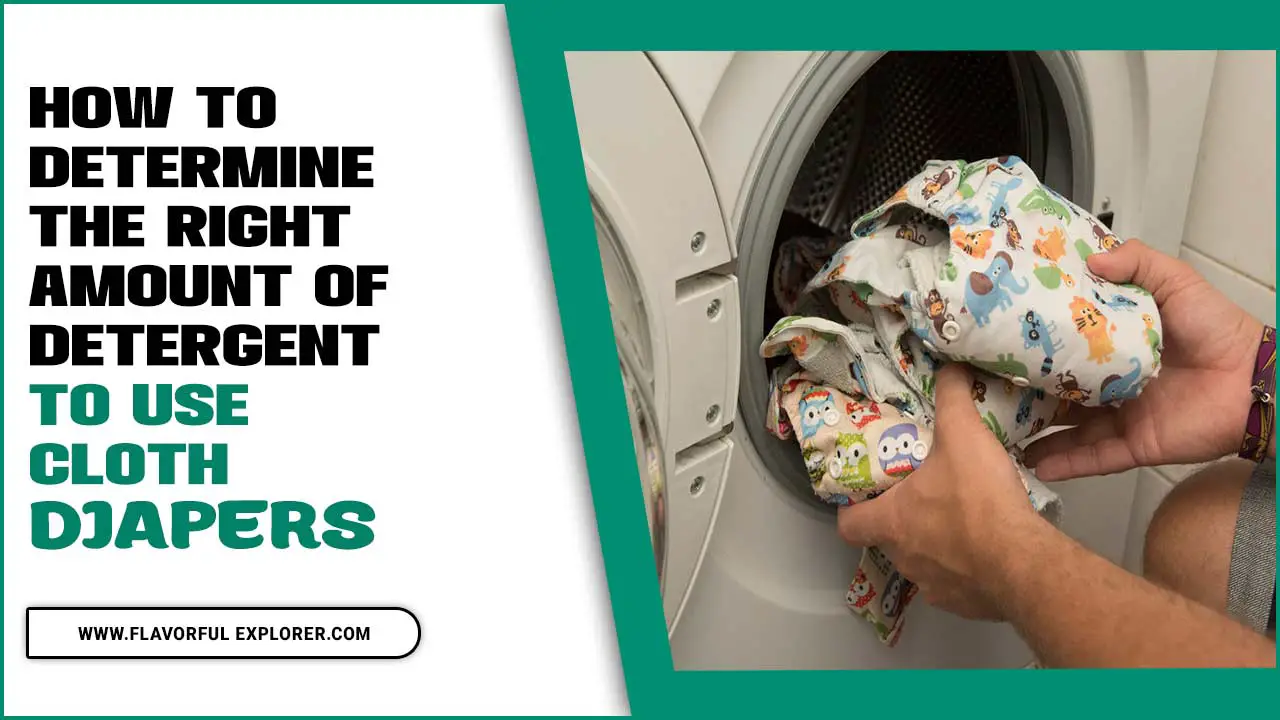Cloth diapers have recently gained popularity as a more eco-friendly and cost-effective option for diapering babies. However, with this increase in usage comes a multitude of questions, one of the most common being how much detergent should be used when washing cloth diapers.
The answer to this question is not as straightforward as one may think, as it depends on various factors such as water hardness, type of detergent, and the amount of dirt and stains on the diapers. Using too much or too little detergent can have negative consequences, ranging from skin irritation to poor cleaning results.
Here, we will delve into the different factors that determine the appropriate amount of detergent to use for washing cloth diapers and provide tips on how to determine the right amount of detergent to use cloth diapers.

What Is Cloth Diapers?
Cloth diapers are a popular alternative to disposable diapers that have gained traction recently due to their eco-friendly nature and cost-effectiveness. Unlike disposable diapers, cloth diapers come from reusable materials such as cotton, bamboo, or hemp, making them a more sustainable choice for parents concerned about their environmental footprint.
Not only are cloth diapers better for the planet, but they also offer several benefits for babies. The natural fibres in cloth diapers are gentle against a baby’s delicate skin, reducing the risk of irritation and diaper rash. Additionally, cloth diapers are often more breathable than their disposable counterparts, helping to regulate a baby’s temperature and prevent discomfort.
How To Determine The Right Amount Of Detergent To Use Cloth Diapers – 4 [Step By Step]
![How To Determine The Right Amount Of Detergent To Use Cloth Diapers - 4 [Step By Step]](https://flavorfulexplorer.com/wp-content/uploads/2023/11/How-To-Determine-The-Right-Amount-Of-Detergent-To-Use-Cloth-Diapers-4-Step-By-Step-1024x576.webp)
here to know the answer how to determine the right amount of detergent to use cloth diapers. Washing cloth diapers and using the right amount of detergent is crucial. Too little detergent can result in a lack of thorough cleaning and leave behind residue.
Too much detergent can lead to buildup, which can cause diaper rash and reduce the absorbency of the diapers. It is important to consider factors such as water hardness, the detergent being used, and the load size to determine the right amount of detergent to use.
A larger amount of detergent may be necessary for areas with hard water to counteract the mineral content. On the other hand, soft water may require less detergent. It is also important to consider the type of detergent being handy. Some detergents are specifically formulated for cloth diapers and may. Here are some steps to help you determine the right amount:
1. Read The Manufacturer’s Guidelines
Start by checking the detergent manufacturer’s recommendations for the amount to use per load. This information is usually mentioned on the detergent packaging or on their website. However, it is important to note that the recommended amount may not always be suitable for cloth diapers, as they are more absorbent and require a thorough cleaning.
A general rule of thumb is to use approximately half of the manufacturer’s recommended amount for a regular load of laundry. This ensures that the diapers are properly cleaned without any residue left behind.
Another factor to consider is the hardness of your water. Hard water requires more detergent than soft water, as it can affect the effectiveness of the detergent. If you live in an area with hard water, you may need to increase the detergent slightly. Conversely, if you have soft water, you might be able to use slightly less detergent.
2. Consider Water Hardness

Take into account the hardness of your water. Hard water requires more detergent to create enough suds for proper cleaning. You can test your water’s hardness using a water testing kit available at most home improvement stores.
Once you have determined the hardness of your water, refer to the detergent manufacturer’s recommendations for the appropriate amount to use. These guidelines are often based on the average hardness of water. However, it is important to note that every detergent brand may have different guidelines, so it is best to follow the instructions specific to your brand.
3. Adjust For Load Size
Adjust the detergent amount based on the size of your diaper load. Larger loads may require slightly more detergent, while smaller loads may need less. It is important to consider the size of your diaper load when determining the right amount of detergent for cloth diapers.
Larger loads typically contain more diapers, so there is more soil and waste to clean. In such cases, you may need to adjust the detergent to ensure thorough cleaning slightly. Using a slightly higher amount of detergent for larger loads can help break down the dirt and stains effectively.
On the other hand, smaller loads may not require as much detergent as there is less soil to remove. Using too much detergent for a small load can result in excessive suds and soap residue, which can be difficult to rinse out completely. By adjusting the detergent amount according to the size of your diaper load, you can ensure optimal cleanliness and maintenance.
4. Avoid Overloading The Washer

Ensure that you don’t overload your washing machine with too many diapers. Overcrowding can prevent proper agitation and hinder the detergent’s ability to clean the cloth diapers effectively. A good rule of thumb is to fill your machine to about 2/3 of its capacity, allowing enough space for the diapers to move freely.
Additionally, it is important to consider the water hardness in your area when determining the right amount of detergent to use. Hard water requires more detergent to effectively remove stains and odours, while soft water requires less.
Following the manufacturer’s instructions on the detergent packaging for dosing guidelines based on water hardness is recommended. Using the right amount of detergent and properly loading your washing machine ensures that your cloth diapers are thoroughly cleaned and ready for reuse.
Determining The Right Detergent Amount
Determining the right detergent amount for cloth diapers is important to ensure proper cleaning and maintenance. Too little detergent may result in insufficient cleaning, leaving odours and stains on the diapers.
On the other hand, using too much detergent can lead to residue buildup, which can cause diaper rash and decrease the absorbency of the diapers. To determine the right amount of detergent to use, it is recommended to follow the manufacturer’s instructions for your specific brand of detergent. Here are some tips to help you in this process:
- Read the manufacturer’s instructions: Different cloth diaper brands may have specific recommendations regarding how much detergent to use. Make sure to check the instructions provided by the diaper manufacturer.
- Consider water hardness: Hard water can affect the effectiveness of detergent. If you have hard water, you may need more detergent to compensate for this.
- Start with the recommended amount: As a general guideline, use the detergent recommended for a moderate soil level. This is typically around ¼ to ½ of the amount recommended for a regular laundry load.
- Observe the cleanliness of the diapers: After each wash, check the cleanliness of the diapers. If they are not coming out clean or have a strong odour, you may need to increase the amount of detergent used.
Troubleshooting Common Detergent-Related Issues

One of the main issues is detergent residue. If the detergent is not properly rinsed out, it can leave behind a residue on the fabric of the diapers. This residue can cause skin irritation for babies and reduce the absorbency of the diapers. To avoid this issue, it is important to ensure that the diapers are rinsed thoroughly after washing and to use a high-quality detergent that is specifically formulated for cloth diapers. along with troubleshooting tips:
- Residue buildup: If you notice that your cloth diapers feel stiff or have a lingering odor, it may indicate a residue buildup. To fix this issue, try the following:
- Rinse your diapers thoroughly before washing to remove any excess detergent.
- Use the appropriate amount of detergent for your load size and water hardness. Follow the manufacturer’s guidelines.
- Consider switching to a detergent specifically formulated for cloth diapers or one that is free of additives, fragrances, and fabric softeners
- Add a water softener, like borax or washing soda, to combat hard water.
- Leaking diapers: Leaks can occur if your diapers are not getting clean enough. Here’s what you can do:
- Increase the amount of detergent used or switch to a detergent with better cleaning power. Make sure to follow the recommended dosage.
Alternative Detergent Options And DIY Solutions
Alternative Detergent Options and DIY SolutionsAside from determining the right amount of detergent to use for cloth diapers, it’s also important to consider alternative detergent options and DIY solutions. Some commercial detergents contain harsh chemicals that irritate a baby’s sensitive skin or cause buildup on diapers over time. Cloth Diapers:
- Soap Nuts: Soap nuts are a natural alternative to traditional detergents. They are a type of berry containing saponins with cleansing properties. You can use soap nuts by placing a few in a muslin bag and tossing it in with your cloth diapers during the wash cycle.
- Homemade Detergent: You can make your cloth diaper detergent using simple ingredients like washing soda, borax, and grated bar soap. Mix these ingredients together in the right proportions and store them in an airtight container. Use about 1-2 tablespoons per load of cloth diapers.
- Oxygen Bleach: Oxygen bleach is a non-chlorine bleach alternative that can remove stains and odours from cloth diapers. Most cloth diaper materials are safe, and you can add it to your regular detergent or use it as a pre-soak treatment.
Maintaining Optimal Hygiene And Odor Control

Maintaining Optimal Hygiene and Odor Control is crucial for cloth diapering. Choosing the right amount of detergent is essential in ensuring that your cloth diapers are properly cleaned and free from bacteria and odor-causing substances. It can be confusing to determine how much detergent to use, as using too little may result in ineffective cleaning while using too much can leave residue and cause skin irritation for your little one. For Cloth Diapers:
- Regular Changing: Change the cloth diaper frequently, ideally every 2 to 3 hours or as soon as it becomes soiled. This helps prevent bacteria growth and keeps your baby’s skin dry and comfortable.
- Proper Washing: Follow a proper washing routine for cloth diapers to ensure they are thoroughly cleaned. This typically involves a pre-wash, main wash, and final rinse. Use a mild detergent suitable for cloth diapers, and avoid using fabric softeners or bleach.
- Storage: Store dirty cloth diapers in a designated diaper pail or wet bag until laundry day. This helps contain any odours and prevents bacterial growth. Ensure proper ventilation to minimize odour buildup.
- Diaper Sprayer: Consider using a diaper sprayer to rinse off solid waste from the diapers before storing or washing them. This can help reduce stains and odour.
Conclusion
Determining the right amount of detergent to use for cloth diapers can be daunting, but it is necessary to maintain their cleanliness and effectiveness. By considering factors such as water hardness, detergent type, and the size of your load, you can find the perfect balance and ensure your baby’s diapers are clean and safe for their delicate skin.
Always follow the manufacturer’s guidelines and maintain your washing machine to keep your cloth diapers in top condition. With these tips on how to determine the right amount of detergent to use cloth diapers, you can confidently use the right amount of detergent for your cloth diapers and provide your baby with the best care possible.
FAQ
1.What Factors Should Be Considered When Determining The Right Amount Of Detergent To Use For Cloth Diapers?
Ans: When determining the right amount of detergent for cloth diapers, factors such as the hardness of water, the size of the load, the type of fabric handy in the diapers, and the sensitivity of the baby’s skin should be considered. It is important to follow the manufacturer’s instructions for the specific detergent.
2.Are There Any Specific Guidelines?
Ans: There are specific guidelines for various aspects of life, including health, safety, ethics, behaviour, and professional conduct. These guidelines provide standards and expectations for individuals and organisations to ensure fairness, consistency, and societal well-being.
3.How Can I Tell If I Am Using Too Much?
Ans: You can tell if you are using too much by assessing its impact on your physical, mental, and emotional well-being. If you notice negative consequences such as physical discomfort, decreased productivity, strained relationships, or a constant sense of overwhelm, it might be a sign that you are using too much. It is important to listen to your body and mind, set boundaries, and practice moderation to maintain a healthy balance in your life.
4.Are There Any Potential Risks?
Ans: Yes, there are potential risks in many aspects of life. Whether it’s in our personal relationships, health, or career, potential risks are always involved. It’s important to be aware of these risks and take necessary precautions to mitigate them. However, it’s also important to remember that taking risks can lead to growth and success. It’s about finding a balance between being cautious and embracing opportunities.
5.Are There Any Alternative Methods?
Ans: Yes, alternative methods are available for various purposes, such as alternative medicine, alternative energy sources, and alternative approaches to problem-solving. These methods offer different approaches and perspectives that may complement or provide alternatives to conventional methods. They can enhance diversity, promote innovation, and address specific needs or concerns.

